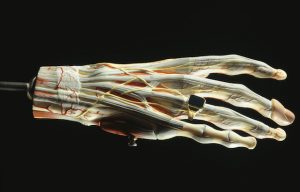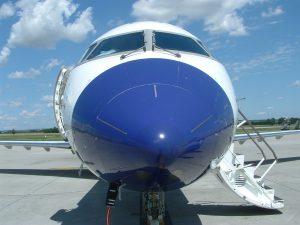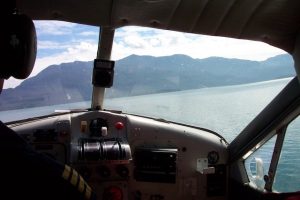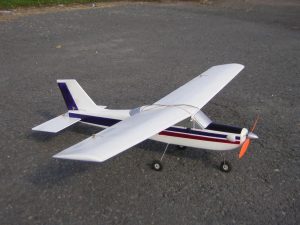Blood Vessels Response At High Altitude
 Blood vessels change when exposed to high altitude. These changes support oxygen delivery as air pressure drops. Blood vessels help adjust the flow of blood in response to lower oxygen. Their flexibility keeps tissues alive and active. At high altitude, blood vessels protect the body from oxygen shortages.
Blood vessels change when exposed to high altitude. These changes support oxygen delivery as air pressure drops. Blood vessels help adjust the flow of blood in response to lower oxygen. Their flexibility keeps tissues alive and active. At high altitude, blood vessels protect the body from oxygen shortages.
Oxygen levels influence blood vessels
As people rise to higher elevations, oxygen levels drop quickly. This shift affects how blood vessels behave. To maintain oxygen flow, vessels expand and contract as needed. This action helps balance blood pressure and oxygen delivery. Without this reaction, tissue health would decline in thin air.
Vasodilation improves oxygen transport
Blood vessels expand in response to reduced oxygen. This expansion is known as vasodilation. It allows more blood to reach the lungs and muscles. Wider vessels reduce pressure and increase blood volume. As a result, oxygen moves more easily through the body. This response supports physical activity at high altitude.
Smooth muscle regulates vessel size
Smooth muscle surrounds blood vessels. This muscle helps control the size of each vessel. At high altitude, smooth muscle responds to oxygen signals. It either relaxes or tightens to match the body’s needs. This reaction ensures steady blood flow in stressful environments. Vessels stay flexible to adapt to changing conditions.
Nitric oxide enhances vascular function
Cells release nitric oxide when oxygen is low. This chemical supports vasodilation in blood vessels. It signals smooth muscle to relax and open the vessels. As a result, oxygen-rich blood reaches tissues faster. Blood vessels use this signal to adjust flow during high altitude exposure.
Red blood cell flow increases
As blood vessels expand, more red cells flow through them. These cells carry oxygen from the lungs to the body. Blood vessels act like highways for red cell travel. When vessel walls stay wide, red cells move without blockage. This change supports energy use and recovery.
Altitude triggers pulmonary vessel changes
Pulmonary blood vessels face direct exposure to low oxygen. These vessels send blood through the lungs. At high altitude, pulmonary vessels may tighten at first. Over time, they adjust to improve gas exchange. Smooth flow in these vessels ensures oxygen reaches the rest of the body.
Blood pressure may rise briefly
Some people experience a brief increase in blood pressure. This change happens as blood vessels react to oxygen loss. The body may send signals to tighten certain vessels. These adjustments keep vital organs supplied with oxygen. Pressure returns to normal once vessels adjust.
New capillaries may develop slowly
With long exposure to high altitude, new capillaries may form. These tiny blood vessels reach into tissue where oxygen is low. Their growth helps improve oxygen delivery. More capillaries mean better contact between red cells and tissues. Blood vessels increase in number to meet demand.
Hydration supports vascular health
High altitude can lead to water loss through breathing. Dehydration affects how blood vessels function. Thicker blood moves slower and increases strain on vessels. Drinking water helps blood flow stay smooth and even. Blood vessels work best when the body stays hydrated and balanced.
Temperature shifts affect vessel movement
Cold temperatures can narrow blood vessels. This action is known as vasoconstriction. It reduces heat loss but slows blood flow. At high altitude, cold air adds stress to blood vessels. They must balance warmth with oxygen delivery. The body uses vessel movement to manage both needs.
Altitude sickness and vascular stress
Some people develop altitude sickness due to rapid ascent. Blood vessels may react too strongly to low oxygen. Headaches and swelling can occur if vessels leak fluid. As the body adapts, these symptoms ease. Proper rest and slow climbing help blood vessels adjust better.
Brain blood vessels need stability
Brain health depends on steady blood flow. High altitude can cause brain vessels to expand too much. This reaction may lead to pressure or discomfort. Smooth blood vessel control keeps the brain supplied with oxygen. Balance in vessel size protects brain function in thin air.
Exercise increases blood vessel demand
Physical activity at high altitude adds pressure to the system. Muscles need more oxygen during exercise. Blood vessels must open wide to deliver nutrients. Regular training improves vascular flexibility. Fit individuals may adapt more easily to altitude changes. Blood vessels perform better with steady use.
Sleep affects vascular adaptation
Sleep supports the body’s adjustment to high altitude. During rest, blood vessels recover from daily stress. Oxygen levels may drop slightly during sleep. Vessels must keep flow steady to support the brain and lungs. Good sleep habits help vessels adapt more quickly to new conditions.
Nutrients help maintain vascular strength
Certain nutrients support the walls of blood vessels. Iron helps red blood cells carry oxygen. Vitamin C keeps vessel linings strong and flexible. High altitude demands more from the vascular system. Eating balanced meals helps the body perform well in low-oxygen environments.
Genetic Traits Influence Vascular Reaction
Some populations live at high altitude year-round. Their blood vessels show special traits for oxygen delivery. These traits may include faster blood flow and better vessel function. Generations of exposure have shaped these adaptations. Studying these groups reveals how vessels thrive in low air pressure.
Altitude Training Expands Vessel Capacity
Athletes often train at altitude to boost performance. Blood vessels grow more efficient during these sessions. They carry more oxygen and recover faster after effort. When athletes return to lower altitudes, their systems perform with greater power. Vessel flexibility supports lasting benefits from training.
Medicines may support vascular adjustment
In some cases, medication helps the body adapt. Certain drugs improve blood vessel function at altitude. These medicines open vessels and reduce pressure. Doctors may prescribe them for people sensitive to high altitude. With support, the vascular system adjusts safely to environmental demands.
Acclimatisation relies on vascular changes
Spending time at altitude allows the body to adjust naturally. Blood vessels change slowly during this period. Steady adaptation prevents damage to tissues. Breathing becomes easier as vessels carry oxygen more efficiently. Acclimatization depends on smooth blood vessel function and healthy circulation.
Environment shapes long-term vascular response
People living in the mountains develop stable vascular patterns. Their bodies produce more red cells and maintain vessel health. Daily exposure to thin air keeps vessels responsive. These conditions shape a unique system of blood flow. Blood vessels continue to support activity in low-pressure environments.
Breathing exercises support vessel function
Certain breathing techniques improve oxygen intake. Deeper breaths send more air into the lungs. Blood vessels then carry more oxygen with each heartbeat. These habits help maintain oxygen levels at high elevation. Practicing these techniques strengthens the vascular system over time.
Altitude challenges demand steady circulation
Mountain environments place extra stress on circulation. Blood vessels must remain flexible and strong. They manage temperature, oxygen, and pressure all at once. With time and support, vessels adjust to these challenges. A strong vascular system keeps the body active and alert.
Adaptation and survival in thin air
Living or working at high altitude demands strong blood vessels. They adjust to maintain flow and oxygen delivery. Without these changes, performance would suffer in thin air. Smooth vessel function supports comfort, energy, and endurance. The vascular system remains active in every step taken uphill.
Sky’s path is through strong circulation
Blood vessels form the body’s transport system. At high altitude, they adapt, expand, and respond to the thin air. Every breath and movement depends on their smooth operation. Through every challenge, vessels carry life through each capillary and vein. In the mountains, they carry strength to every cell.









